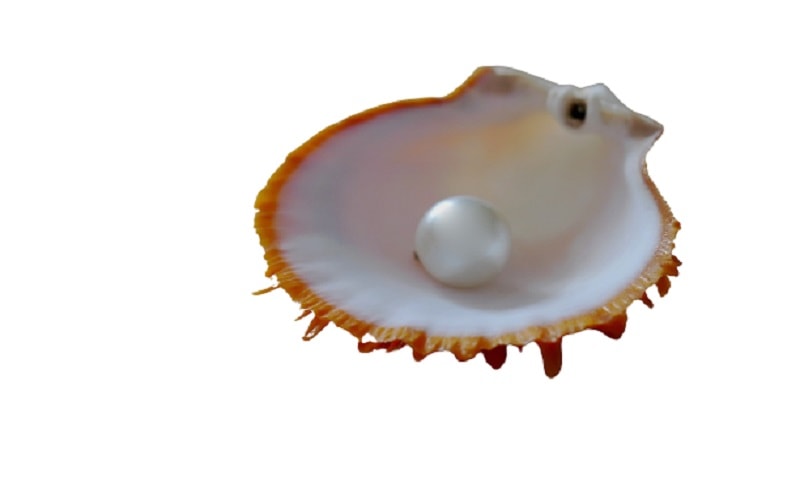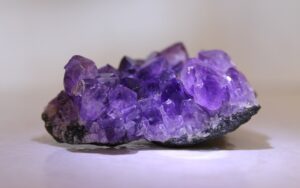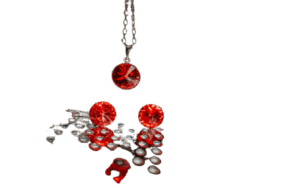Pearls have long been revered for their timeless beauty and elegance. From ancient civilizations to modern fashionistas, pearls have captivated hearts and adorned the necks, ears, and wrists of those seeking a touch of sophistication. In this guide, we will delve into the world of pearls, exploring their origins, types, and the factors that make them truly exquisite.
For many years, people have loved pearls because they represent being pure and fancy. Pearls come from the deep sea and are made when something bothers a soft part of an ocean animal called a mollusk. To protect itself, the mollusk adds layers of a shiny stuff called nacre to make the pearl. This way, each pearl gets its special shape, size, and shiny look in a natural way.
From classic white pearls to vibrant Tahitian and freshwater pearls, the world of pearls offers a dazzling array of options. Each type of pearl possesses its own distinct characteristics, making them suitable for different styles and occasions. Whether you’re a seasoned pearl enthusiast or a newcomer to the world of gems, this guide will provide you with valuable insights to appreciate the beauty and allure of pearls.
The Beauty of Pearls: A Guide to the World’s Most Elegant Gem
History of Pearls
The history of pearls dates back thousands of years, with evidence of their use in ancient civilizations. Pearls have always been admired for their beauty and elegance. Their luster and unique properties make them one of the most sought-after gemstones in the world.
Natural pearls are formed when an irritant enters a mollusk, which then secretes layers of nacre to create the pearl’s smooth surface. Throughout history, pearls have been treasured and used to create exquisite pearl jewelry.
There are various types of pearls available, each with its own distinct characteristics and origins. South Sea pearls, known for their large size and rich colors, are highly coveted by collectors and connoisseurs alike.
With such a wide range of options available, the allure of pearls continues to captivate people today.
Types of Pearls
Among the various types of pearls, there’s a unique allure to freshwater pearls. These exquisite gems are not only beautiful but also come in a wide variety of colors. Unlike saltwater pearls, which are formed inside oysters in the ocean, freshwater pearls are created by mollusks living in rivers and lakes.
Cultured freshwater pearls have become increasingly popular due to their affordability and availability. Akoya pearls, on the other hand, are saltwater pearls known for their exceptional luster and round shape. And let’s not forget about the iconic black pearl, which is rare and highly sought after for its mysterious beauty.
Whether you prefer classic white or vibrant hues like pink or lavender, freshwater pearls offer an endless array of colors to choose from, making them a versatile gemstone for any jewelry collection.
Cultivation and Harvesting Process
When cultivating and harvesting freshwater pearls, you’ll find that the process involves inserting small pieces of tissue into the mollusks to stimulate pearl formation. This cultivation technique, known as pearl farming, allows for the controlled growth of these exquisite gems.
The first step in the harvesting process is to carefully open the oyster and extract the pearl. Next, the pearl undergoes a thorough cleaning and polishing to enhance its natural luster.
Once cleaned, pearls are used in various forms of jewelry such as necklaces and earrings. The timeless elegance of pearl jewelry is renowned for its ability to elevate any outfit or occasion. Whether you’re looking for a statement piece or a delicate accessory, pearls offer a touch of sophistication that is truly unmatched.
Factors Affecting Pearl Quality
Factors affecting pearl quality can include the size, shape, color, and luster of the pearls. To create beautiful pearls that are ideal for a stunning pearl jewelry piece, each factor must be carefully considered.
The perfect pearl possesses a captivating beauty that rivals any other gemstone. The size of a pearl impacts its overall appearance, with larger pearls often being more coveted. Similarly, the shape of a pearl can greatly enhance its beauty; perfectly round pearls are highly sought after.
Color is another essential aspect to consider as it determines the array of colors available in pearl jewelry. Lastly, the luster of pearls refers to their shine or glow and is indicative of high-quality dodecahedral stones. Proper storage and care also play crucial roles in maintaining the lustrous appeal of these precious gems.
Popular Pearl Jewelry Styles
One of the most popular pearl jewelry styles is the classic strand necklace. Pearls are a timeless and elegant choice, and a classic pearl necklace can elevate any outfit.
There are various types of pearls available, each with its own unique characteristics. Classic pearl necklaces usually feature round or near-round pearls, but irregular shapes like off-round and baroque pearls are also popular choices for those seeking something different.
In addition to necklaces, modern pearl earrings have become increasingly trendy, adding a touch of sophistication to any look. For those with a boho style, a pearl bracelet or necklace with unique designs and natural elements can be the perfect accessory.
Pearls truly offer endless possibilities in creating stunning and stylish jewelry pieces that suit every individual’s taste. Browse Amazon selections to get an idea of popular pearl jewelry styles.
Caring for Pearls
Caring for pearls is essential to maintain their luster and longevity. To preserve the allure of your pearls, it is important to understand how to properly care for them.
When caring for your pearls, it’s crucial to know what type of pearls you have. Real pearls, whether cultured or natural, require gentle handling and should be stored separately from other jewelry pieces to prevent scratching.
Additionally, associations with pearls include elegance and sophistication. Stick pearls are unique in shape and offer a contemporary twist on traditional pearl designs. Ethical pearl farming practices ensure that these beautiful gems are produced sustainably.
Keep in mind that while high-quality pearls can be expensive investments, proper care will ensure their lasting beauty for generations to come.
Famous Pearls in History
Throughout centuries, pearls have captivated people with their beauty and grace. From classic pearls to bold pearl bracelets, these gems hold a special place in history.
One notable example is the association of pearls with royalty. Golden pearls were particularly favored by monarchs, showcasing their wealth and power.
The majority of freshwater pearls are cultivated today, offering a more accessible option for those seeking the luster and distinction that pearls bring.
Baroque pearl necklaces have also made an impact on fashion, with their unique shapes adding an element of intrigue.
Whether it’s a baroque necklace or a classic strand of pearls, these gems continue to enchant us with their timeless beauty.
Conclusion
In conclusion, pearls have a rich history and come in various types, each with its own unique beauty.
Cultivating and harvesting pearls is a meticulous process that involves careful attention to detail. The quality of pearls is influenced by factors such as size, shape, luster, and surface quality.
From classic pearl necklaces to modern pearl earrings, there are many popular styles of pearl jewelry to choose from.
To keep your pearls looking their best, proper care is essential.
Lastly, the world has seen some truly famous and remarkable pearls throughout hist
Check out our most popular gemstone selection.




